Research Article
Translation
Aim & Scope
JOCSOSA is published with the aim of discussing the cultural values and issues of Turkish and Islamic geography and contributing to international scientific world with authentic and academic studies in accordance with scientific research methods.
JOCSOSA is an international peer-reviewed journal that includes research articles written in Turkish, English and Arabic languages prepared in the light of scientific activities in such various fields of Social Sciences as Literature, History, Sociology, Political Science, and Economy.
Author Guidelines
Writing Rules
Title: should reflect the content clearly and be written using 12 pt. as capitalized and bold.
Author's name(s) and contact address(es): contact information should be provided in manuscript(s).
This information should be provided in the related titles in “Copyright Transfer Form” and “Ethical Statement Form” that are uploaded with the study.
Abstract: A Turkish abstract that reflects a brief summary of the study including minimum 150 and maximum 250 words should be provided at the beginning of the manuscript(s). Below the abstract after leaving a space, there should be minimum 3 and maximum 5 keywords that are directly related with the article. In the article(s) written in Turkish and Arabic, the title of the study should be provided in English following the title, abstract and keywords. After leaving a space, English translation of abstract and keywords should be provided under abstract and keywords section.
Expanded English Abstract: In the article(s) written in Turkish and Arabic, an expanded abstract minimum 750 and maximum 1.000 words should be provided in English.
Titles of sections: Main, interim and sub titles can be employed in article(s). The titles of main sections of the study, references and appendices should be written as capitalized and bold; interim titles as bold and with lower cases except initials; and subtitles as bold and with lower cases. A colon should be placed after subtitles and the section starts without any space. The titles should not be automatically numbered.
Main text: should be written in A4 Portrait (16,5 x 24,7 cm), leaving a space of 2,5 cm on page edges (right, left, bottom, top 2,5cm), definitely in MS Word program, with 11 font size of Times New Roman, with single line spacing. Between the paragraphs (before-after) should be left 6 nk (inches), the first line of the paragraphs should be indented 1cm on the left and the text should be written as double spaced. When font use is necessary in the text, the file of the font should be sent separately.
Tables, pictures, figures, etc.: Author(s) can use such materials as tables, pictures and figures in line with scientific standards. But, when they are employed, automatic instructions should not be activated. Tables should be as plain as possible and include the necessary information. The texts and characters should have a font size of 9. Pictures should have a high resolution. They should be given in “APPENDICES” section if not directly related with the text.
Texts should not contain page numbers.
The length of the manuscript(s) should not exceed 7.000 (seven thousands) word limit including titles, abstract and keywords.
Sample Referencing
JOCSOSA adopts APA 7 – Citation Guide. The resources used in the study should be listed in “REFERENCES” section in alphabetical order according to the surname of the authors. A resource that is not cited should not be given under this title. References should be written as single spaced and with a font size of 10.
Book with one author:
Sapolsky, R. M. (2017). Behave: The biology of humans at our best and worst. Penguin Books.
Book with two authors:
Svendsen, S. & Løber, L. (2020). The big picture/Academic writing: The one-hour guide. Penguin Books.
Book chapter:
Aron, L. (2019). Culinary arts: Talent and their development. RF Subotnik and FC Worrell (Eds.), Conceptualizations of giftedness and the development of talent (pp. 345-359). American Psychological Association.
Article with one author:
Karakaya, V. (2021). On Modelling of the Mathematical Objects from the Philosophy of Mathematics. Beytulhikme An International Journal of Philosophy, 11(3): 1143-1155.
Article with two authors:
Şimşek, N. & Karakaya, V., (2008). Structure and some geometric properties of generalized Cesaro sequence space”. International Journal of Contemp. Math. Sciences. 3(8), 389–399.
Book with editor:
Kesharwani, P. (Ed.). (2020). Nanotechnology based approaches for tuberculosis treatment. Academic Press.
Translated Book:
Ersoy B. A. Vd. (2012). Thomas Calculus, (12. Ed). (George B. Thomas, Maurice D. Weir-Hass). Pearson Publishing.
Theses:
Kabir, J. M. (2016). Factors influencing customer satisfaction at a fast food hamburger chain: The relationship between customer satisfaction and customer loyalty (Doctoral dissertation, Wilmington University). UA Campus.
Citations within text:
Direct citations more than 40 words are provided as block quotations indenting it 2cm from the left margin and quotation marks are not used. When explanations are necessary, footnotes can be employed with automatic order number. The author(s) are not suggested to use footnotes unless it is unavoidable.
Example:
Vatan Karakaya (2021) states with regard to mathematical objects:
It has been accepted by most of the philosophers of mathematics that mathematical objects are abstract beings and closed to the five senses. However, although mathematical knowledge is closed to the senses as being an abstract entity, it is nevertheless so effective in the sensible world. (p. 14).
The citations less than 40 words are provided in quotes. Following the surname of author, publication date of the work should be given within parenthesis and page number should be placed within parenthesis at the end of the citation.
Example:
Vatan Karakaya (2021) claims that “mathematical knowledge is closed to the senses as being an abstract entity” (p. 14).
When paraphrasing is made, page number is not needed. Such citations can be displayed as paraphrased sentence (Surname, year) or Surname (year) paraphrased sentence.
For those not given here, see: https://apastyle.apa.org/products/publication-manual-7th-edition
Ethical Principles and Publication Policy
The manuscripts sent to JOCSOSA for publication are expected to be original and comply with academic ethics.
Author(s) are obliged to avoid breach of publication ethics such as plagiarism, duplication, fabrication, salamization, gift authorship, ghost writing, biased selection of resources. During the article submission, author(s) should submit to the journal the plagiarism report checked on iThenticate software. The manuscript(s) that has a resemblance ratio over 15% will not be evaluated.
The institutions and financial resources that have supported the study sent to JOCSOSA should be stated in acknowledgements section. Author(s) should document to have the participants' consents when social experiments and questionnaires are implemented. In the cases when consent forms cannot be received, author(s) should take the approval of ethics committee from the relevant institutions / organizations and submit it with the study.
The manuscript(s) that has been submitted to JOCSOSA cannot be sent to multiple journals simultaneously.
When an author discovers a significant error or inaccuracy in her / his own published paper at JOCSOSA, it is the author's obligation to promptly inform the Editor of the Journal and be in contact to withdraw / revise the manuscript.
The author(s) whose study has been accepted for publication at JOCSOSA confirms that they have gathered all the data of the study within the framework of ethical responsibilities and academic rules and that they have provided without any missing ones the references regarding any statements, data and findings belonging to others. In case of any breach as a result of ignoring publication ethics, legal responsibilities of published manuscript belong to its author(s).
JOCSOSA adopts the standards based on the guidelines developed by COPE (Committee on Publication Ethics) in any academic studies of the editors, board members, reviewers and authors (see https://publicationethics.org/).
Price Policy
JOCSOSA claims no fees from author(s) during the review process of the manuscripts and does not pay any fees for copyrights.
Indexes
Other Indexes
Journal Boards
Editor in Chief
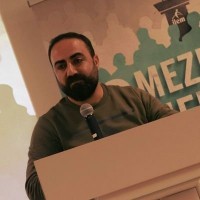




Deputy Editor


Editor



 Web
Web
Dr. Öğr. Üyesi Lütfü Çakır
Lisans: Boğaziçi Üniversitesi, Matematik Öğretmenliği, 2011
Y. Lisans: Yıldız Teknik Üniversitesi, Eğitim Yönetimi, 2015
Doktora: Marmara Üniversitesi, Eğitim Yönetimi, 2022
Çalışma alanları: Eğitim yönetimi, eğitim politikaları, yetenek yönetimi, özel yetenekli öğrenciler.
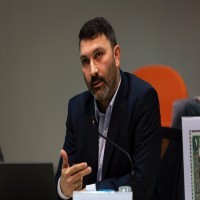
Doç. Ebubekir Ceylan
L: Boğaziçi Üniv-Tarih 1997
YL: Manchester Univ. 1998
Dokt: Boğaziçi Üniv-Tarih 2006
Çalıştığı Kurum: İTÜ- sosyoloji Blm
İdari görevi: İTÜ Atatürk İlkeleri ve İnkılap Tarihi Bölüm Bşk.
Sosyoloji Bölümü Başkanı (v.)

Mervan Selçuk graduated from the Business Department of Istanbul University in 2014. He received his MA and Ph.D. degrees from Islamic Economics and Finance Department at Sakarya University in 2016 and 2021, respectively. His doctoral dissertation is about the feasibility of a monetary union in Islamic countries. He was a visiting researcher at Kuwait University between November 2018 - May 2019. Since 2015, Assoc. Prof. Selçuk has been a research assistant at the Research Centre of Islamic Economics and Finance, Sakarya University. His research areas include Islamic economics, monetary unions, and cryptocurrencies.
Field Editors

Mervan Selçuk graduated from the Business Department of Istanbul University in 2014. He received his MA and Ph.D. degrees from Islamic Economics and Finance Department at Sakarya University in 2016 and 2021, respectively. His doctoral dissertation is about the feasibility of a monetary union in Islamic countries. He was a visiting researcher at Kuwait University between November 2018 - May 2019. Since 2015, Assoc. Prof. Selçuk has been a research assistant at the Research Centre of Islamic Economics and Finance, Sakarya University. His research areas include Islamic economics, monetary unions, and cryptocurrencies.
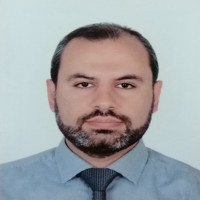
Ali Osman Karaoğlu graduated from Marmara University Faculty of Law in 2008. Between 2008 and 2012, he worked as a lawyer affiliated to the Istanbul Bar Association. In 2013, he received his LLM degree in International Law from SOAS, University of London. In 2019, she completed her doctorate (PhD) in Public Law at Istanbul Sehir University. She was a visiting researcher at IALS, University of London for her master's thesis research, at Max Planck Institute for Comparative Public Law and International Law for her doctoral thesis research, and at Georgetown University & Institute of International Law for her post-doctoral research. She is currently working as a faculty member at Yalova University Faculty of Law, Department of International Law.





Doç. Ebubekir Ceylan
L: Boğaziçi Üniv-Tarih 1997
YL: Manchester Univ. 1998
Dokt: Boğaziçi Üniv-Tarih 2006
Çalıştığı Kurum: İTÜ- sosyoloji Blm
İdari görevi: İTÜ Atatürk İlkeleri ve İnkılap Tarihi Bölüm Bşk.
Sosyoloji Bölümü Başkanı (v.)

Emrah Atar is an Associate Professor of Political Science and Public Administration in the Faculty of Economics and Administrative Sciences at Recep Tayyip Erdoğan University, Turkey. He is also the Head of the Department of Political Science and Public Administration, as well as the Department of Urbanization and Environmental Issues. Additionally, he serves as Deputy Director of the Climate Change and Environmental Issues Application and Research Center at the same university.
His main research focuses on governance, migration, urban policy, and the environmental challenges faced by modern societies. He has conducted extensive research on the intersection of politics, public administration, and urbanization, with particular attention to the impacts of climate change, migration dynamics, and sustainable development. His academic contributions include numerous publications in national and international journals, as well as book chapters and conference presentations.
In addition to his academic work, Atar serves as Book Review Editor for the International Migration Review, Assistant Editor for the Journal of Academic Value Studies, and Field Editor for the Uluslararası Ekonomi İşletme ve Politika Dergisi (International Journal of Economics, Business, and Politics).
He holds a PhD in Development Policy and Management from The University of Manchester, UK, and a master’s degree in Public Administration from the University of Illinois at Chicago, USA. These educational pursuits were funded by the Republic of Turkey under the 1416 YLSY Law.


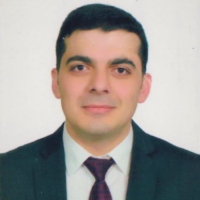
Yayın Kurulu
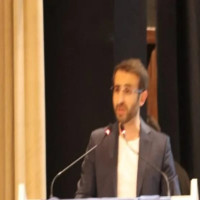

Doç. Ebubekir Ceylan
L: Boğaziçi Üniv-Tarih 1997
YL: Manchester Univ. 1998
Dokt: Boğaziçi Üniv-Tarih 2006
Çalıştığı Kurum: İTÜ- sosyoloji Blm
İdari görevi: İTÜ Atatürk İlkeleri ve İnkılap Tarihi Bölüm Bşk.
Sosyoloji Bölümü Başkanı (v.)



Mervan Selçuk graduated from the Business Department of Istanbul University in 2014. He received his MA and Ph.D. degrees from Islamic Economics and Finance Department at Sakarya University in 2016 and 2021, respectively. His doctoral dissertation is about the feasibility of a monetary union in Islamic countries. He was a visiting researcher at Kuwait University between November 2018 - May 2019. Since 2015, Assoc. Prof. Selçuk has been a research assistant at the Research Centre of Islamic Economics and Finance, Sakarya University. His research areas include Islamic economics, monetary unions, and cryptocurrencies.


 Web
Web
Dr. Öğr. Üyesi Lütfü Çakır
Lisans: Boğaziçi Üniversitesi, Matematik Öğretmenliği, 2011
Y. Lisans: Yıldız Teknik Üniversitesi, Eğitim Yönetimi, 2015
Doktora: Marmara Üniversitesi, Eğitim Yönetimi, 2022
Çalışma alanları: Eğitim yönetimi, eğitim politikaları, yetenek yönetimi, özel yetenekli öğrenciler.

 Web
Web
After completing my primary and high school education, I studied Arabic and Islamic Sciences at Kuftaro University, Mahed Al-Aminiyya and Al-Fatah University in Damascus, the capital of Syria, between 2006-2009. In 2010, I started my undergraduate education in Islamic Studies BS at the International Islamic University Islamabad and graduated in 2014. At the same time, I started my Master's degree in Urdu Language and Literature in 2016 and graduated in 2019. In 2017, I was appointed as a Research Assistant at Istanbul University, Department of Urdu Language and Literature. In 2019, in Istanbul University Institute of Social Sciences, Department of Urdu Language and Literature, under the supervision of Assoc. Prof. Dr. Arzu ÇİFTSÜREN, Zahide Hatun Şirvanî: I completed my master's degree with the study titled Literary Personality and Poems. In 2019, I started my doctorate education in Istanbul University Institute of Social Sciences, Department of Urdu Language and Literature under the supervision of Prof. Dr. Celal SOYDAN and graduated in 2024. I am currently working as a Research Fellow Dr. at Istanbul University, Department of Urdu Language and Literature.


Yazım Editörü

 Web
Web
After completing my primary and high school education, I studied Arabic and Islamic Sciences at Kuftaro University, Mahed Al-Aminiyya and Al-Fatah University in Damascus, the capital of Syria, between 2006-2009. In 2010, I started my undergraduate education in Islamic Studies BS at the International Islamic University Islamabad and graduated in 2014. At the same time, I started my Master's degree in Urdu Language and Literature in 2016 and graduated in 2019. In 2017, I was appointed as a Research Assistant at Istanbul University, Department of Urdu Language and Literature. In 2019, in Istanbul University Institute of Social Sciences, Department of Urdu Language and Literature, under the supervision of Assoc. Prof. Dr. Arzu ÇİFTSÜREN, Zahide Hatun Şirvanî: I completed my master's degree with the study titled Literary Personality and Poems. In 2019, I started my doctorate education in Istanbul University Institute of Social Sciences, Department of Urdu Language and Literature under the supervision of Prof. Dr. Celal SOYDAN and graduated in 2024. I am currently working as a Research Fellow Dr. at Istanbul University, Department of Urdu Language and Literature.
Publishing Secretary

He completed his undergraduate education at the Department of Psychology at Fatih Sultan Mehmet Vakıf University. He completed his master's degree at the Department of Philosophy at İstanbul 29 Mayıs University. He is currently pursuing his doctoral studies at the Department of Philosophy at Istanbul University. He continues his research in the fields of logic, philosophy of language, and metaphysics.
All articles published on JOCSOSA are licensed under the Creative Commons Attribution 4.0 International License. This license grants you the right to reproduce, share and disseminate data mining applications, search engines, websites, blogs, and all other platforms, provided that all published articles, data sets, graphics and attachments are cited. Open access is an approach that facilitates interdisciplinary communication and encourages different disciplines to work with each other.



